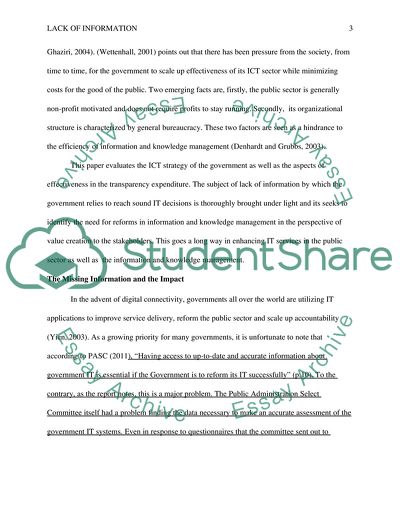Cite this document
(Governments ICT strategy and the Transparency Expenditure Coursework Example | Topics and Well Written Essays - 1750 words, n.d.)
Governments ICT strategy and the Transparency Expenditure Coursework Example | Topics and Well Written Essays - 1750 words. https://studentshare.org/information-technology/1865084-lack-of-information
Governments ICT strategy and the Transparency Expenditure Coursework Example | Topics and Well Written Essays - 1750 words. https://studentshare.org/information-technology/1865084-lack-of-information
(Governments ICT Strategy and the Transparency Expenditure Coursework Example | Topics and Well Written Essays - 1750 Words)
Governments ICT Strategy and the Transparency Expenditure Coursework Example | Topics and Well Written Essays - 1750 Words. https://studentshare.org/information-technology/1865084-lack-of-information.
Governments ICT Strategy and the Transparency Expenditure Coursework Example | Topics and Well Written Essays - 1750 Words. https://studentshare.org/information-technology/1865084-lack-of-information.
“Governments ICT Strategy and the Transparency Expenditure Coursework Example | Topics and Well Written Essays - 1750 Words”. https://studentshare.org/information-technology/1865084-lack-of-information.


